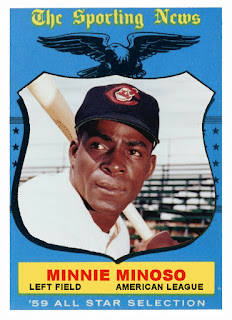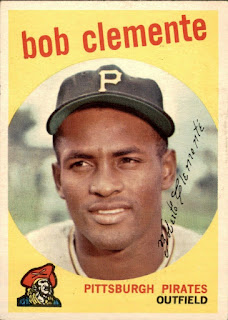I've been a bit behind on my postings, due to trying to put together another pack of physical cards. Also just work, family, holidays, etc. Also, for the time being, I'm going to monitor ALL of the comments, as this blog has been getting spam comments lately. I will try to allow comments quickly so they will show, unedited, while trying to weed out the spam.
The National League All Star infield had a lot of potential cards to add to the 1960 set. Much of this is due to having 2 ASGs in 1959. That being said, the only position Topps seemed to be in sync with was shortstop. Ernie Banks was the starter in both 1959 ASGs and was a 1960 Sporting News All Star.
However, at first Topps had Willie McCovey, the 1959 Rookie of the Year, but the future Hall of Famer wouldn't make an All Star appearance until 1963. In the first game of 1959, his teammate, Orlando Cepeda was the starter at first.
In the second game Stan Musial was the starter at first base. In 1960 The Sporting News selected one All Star team rather than one from each league and in 1960 the selection was Moose Skowron of the Yankees.
Topps had Dodgers Gold Glove second baseman as their All Star selection. He was a reserve in the second ASG of 1959 and both 1960 ASGs. The starter in both 1959 games was the Reds' Johnny Temple.
The 1960 Sporting News selection was Bill Mazeroski. He was also the starter at second in both 1960 All Star games.
At third Topps had Eddie Mathews. Mathews was the 1960 Sporting News All Star and started the first All Star game in 1959. The player who started the second game was Ken Boyer.
Who probably didn't merit inclusion in the 1960 Topps All-Star set, but was in it anyway?
Willie McCovey
Stretch was the Rookie of the Year in 1959, but didn't have a Topps card. (Here is my version of that missing card). Perhaps Topps was making up for that by giving him two cards in the 1960 set. But he wouldn't make an All Star appearance until 1963. It wasn't until 1965 that he would be a Sporting News All Star selection.


















































